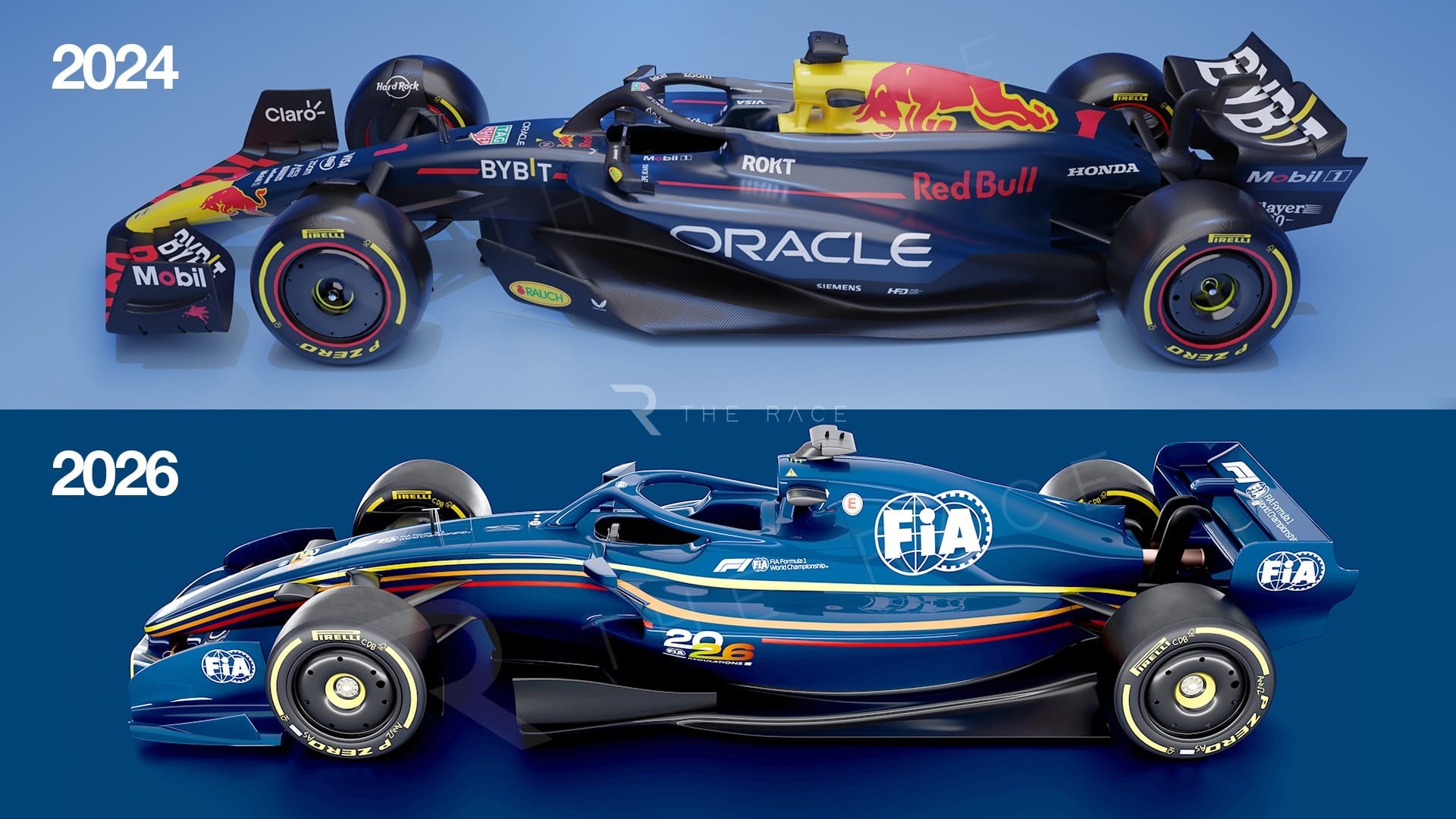Formula 1 is standing on the precipice of its most significant transformation since the dawn of the hybrid era in 2014. The year 2026 is circled on every team’s, driver’s, and fan’s calendar, marking a regulatory overhaul so profound that it promises to redefine the very essence of Grand Prix racing. Leaked details and official announcements paint a picture of a sport grappling with its future, aiming for sustainability and better racing while navigating a minefield of technical challenges and driver apprehension. The new cars are set to be smaller, lighter, and more electrically supercharged than ever, but they may also be slower, harder to handle, and fundamentally different to drive.

The core philosophy behind the 2026 regulations is a dramatic pivot towards a more “nimble” race car. The machines that will grace the grid will be shorter and narrower, shedding weight in a bid to improve wheel-to-wheel action. This is a direct response to the criticism that modern F1 cars have become too large and unwieldy, making overtaking on tight street circuits a near-impossibility. The aerodynamic concept is being completely rethought. The complex, multi-element front wings of today will be replaced by simpler, more curved designs. At the rear, the beam wing is being discarded, and the main rear wing itself will be thinner, though intricate in its own right.
Perhaps the most radical aerodynamic shift is happening underneath the car. The large Venturi channels that have defined the current ground-effect era will be gone. In their place, as described by Mercedes’s technical guru James Allison, will be a flatter floor with a central step. This design will deliberately reduce the powerful low-pressure zone that sucks the cars to the track, resulting in a significant loss of downforce. Paired with narrower tires, this means less overall grip. The immediate consequence? The cars will be more of a handful, sliding more and placing a greater emphasis on driver skill to find the limit. The days of seemingly limitless grip are numbered.
While aerodynamic grip is being scaled back, power is being amped up in a spectacular fashion. The 2026 power units will represent a seismic shift in energy philosophy. The internal combustion engine, a 1.6-liter V6, will see its output reduced to around 575 horsepower. However, the electrical component is receiving a colossal upgrade. The MGU-K (Motor Generator Unit – Kinetic) will be capable of deploying nearly 475 horsepower, a threefold increase from the current generation. This brings the total peak output to over 1,020 horsepower, making the 2026 cars the most torque-heavy machines in the sport’s illustrious history.

This power will be deployed in conjunction with a new active aerodynamics system. On the straights, drivers will be able to flatten both the front and rear wings, drastically reducing drag. The theoretical top speeds are staggering, with some simulations suggesting the cars could touch the mythical 400 km/h (248 mph) barrier. But there’s a fascinating and controversial twist. Due to the way the energy is deployed and recovered, drivers may hit their top speed midway down a long straight and then effectively begin to “coast” as the system switches focus to harvesting energy for the next deployment. This has raised concerns about strange closing speeds and potentially awkward racing dynamics.
Early feedback from the simulators has been mixed, leaning towards negative. Ferrari’s star, Charles Leclerc, bluntly stated that the experience was “not fun,” a sentiment that sent ripples of concern through the F1 community. Reigning world champion Max Verstappen has been more measured, acknowledging that it is still very early in the development cycle, but his lack of outright enthusiasm was palpable. The drivers are the heart of the sport, and if they find the new machines unrewarding to drive, it could tarnish the entire spectacle.
The sport’s leaders, however, are urging patience. F1 CEO Stefano Domenicali and Mercedes Team Principal Toto Wolff have both emphasized that “different” does not necessarily mean “worse.” They argue that drivers are adaptable and that a new challenge could ultimately prove to be a positive evolution. James Allison offers a counter-narrative to the drivers’ initial concerns, suggesting that the driving experience might even be more pleasant. He predicts that the new aerodynamic platform will lead to fewer balance shifts through corners, making it easier for drivers to manage understeer and oversteer, and thus push the car with more confidence.

A central pillar of the 2026 vision is to increase the influence of the driver in the race outcome. Energy management is set to become a critical battleground. Drivers will have more direct control over how they deploy their electrical power and when they choose to recharge the battery. This creates a new layer of strategy, where a driver’s intelligence and foresight in managing their energy reserves could be just as important as their outright speed. It’s a move away from races being dictated solely by engineers on the pit wall and a step towards empowering the gladiators in the cockpit.
The quest for better racing also means the end of the Drag Reduction System (DRS) as we know it. For over a decade, DRS has been a crucial, if somewhat artificial, tool for overtaking. In 2026, it will be replaced by a “manual override mode,” a concept likened to the “push-to-pass” systems seen in championships like IndyCar. This will give a chasing driver an extra electrical boost to attempt an overtake. The exact power and duration of this boost will be tailored to each circuit, with the goal of making overtaking challenging but achievable, a delicate balance the sport has often struggled to find.
However, all this change comes with a significant and worrying caveat: lap times. Initial simulations from teams suggest the 2026 cars will be anywhere from one to two and a half seconds slower per lap than the current machinery. For a sport predicated on being the absolute pinnacle of speed, this is a bitter pill to swallow. FIA’s single-seater director, Nicolas Tombazis, has pushed back against this concern, arguing that fans will not be fixated on a stopwatch if the on-track product is more compelling, with closer battles and more frequent overtaking. It’s a gamble that pits raw pace against pure racing spectacle.
Compounding the challenge is the dynamic between the rule-makers and the teams. The FIA is continuously tweaking the regulations, forcing teams to adapt on the fly. Development work that has cost millions of dollars and thousands of man-hours can be rendered obsolete by a single clarification or rule change. This has led to simmering frustration within the paddock, as teams scramble to hit a constantly moving target. The energy rules, in particular, are in a state of flux, with specific limits on power usage and recovery being defined track-by-track to ensure safety, a major concern on high-speed street circuits like Jeddah and Baku.
Ultimately, the 2026 regulations represent the most ambitious and uncertain leap of faith Formula 1 has taken in a generation. The goals are noble: to create smaller, more raceable cars, to place a greater emphasis on driver skill, and to push the boundaries of hybrid technology. The potential rewards are immense—a future defined by intense, unpredictable, wheel-to-wheel action. But the risks are equally great. If the cars are unpleasant to drive, if the racing is confusing, or if the spectacle is diminished by slower speeds, the sport could find itself in a crisis. The teams, drivers, and engineers are now in a frantic race against time, a race to solve a complex puzzle before the lights go out for the first time in 2026. The future of Formula 1 is being forged today, and the entire world is watching to see what emerges from the fire.
News
Die Welt hat sich weitergedreht: Marie Fredriksson rechnet leise ab – 5 Stars, die sie im Stich ließen.
Der Klang von Roxette war der Soundtrack einer ganzen Generation. Mit Hits wie „It Must Have Been Love“ und „The…
Conny Froboess: Die bittere Wahrheit hinter der Traumkarriere – Im Alter trägt sie eine unheilbare Wunde.
Der Name Conny Froboess ist in Deutschland untrennbar mit einem Gefühl von Leichtigkeit und sonnigen Kindertagen verbunden. Wenn ihr größter…
DER WACKELDACKEL DER REPUBLIK: WIE MERZ’ „HERBST DER REFORMEN“ IN EINER EISZEIT DER STARRE ENDETE UND UNSERE ZUKUNFT VERPFÄNDET WIRD
Einbruch in die politische Wirklichkeit: Die bittere Bilanz nach dem Versprechen des Aufbruchs Mit großen Versprechungen begann die Zeit, die…
Bommes’ Nerven liegen blank: Unerwarteter Eklat in der letzten Folge von „Gefragt – Gejagt“ schockt die Fans
Ein Augenblick, der das harmonische Ende einer Quiz-Saison sprengte. Ausgerechnet in der vorerst letzten Ausgabe der erfolgreichen ARD-Show „Gefragt –…
Herzschlag-Finale in der Scheune: Friedrich und Laura trotzen dem TV-Kitsch mit dem ehrlichsten Liebesbeweis der Staffel
Der leise Moment, der lauter spricht als jede große Inszenierung Es war der Moment, auf den Millionen von Zuschauern der…
Kai Pflaume bricht sein Schweigen: Das 30-Jahre-Geheimnis hinter Deutschlands Vorzeige-Ehe und warum seine Ilke sein wichtigstes Korrektiv ist
Die deutsche Fernsehlandschaft hat viele Gesichter, aber nur wenige sind so konstant, so sympathisch und so untrennbar mit dem Gefühl…
End of content
No more pages to load












